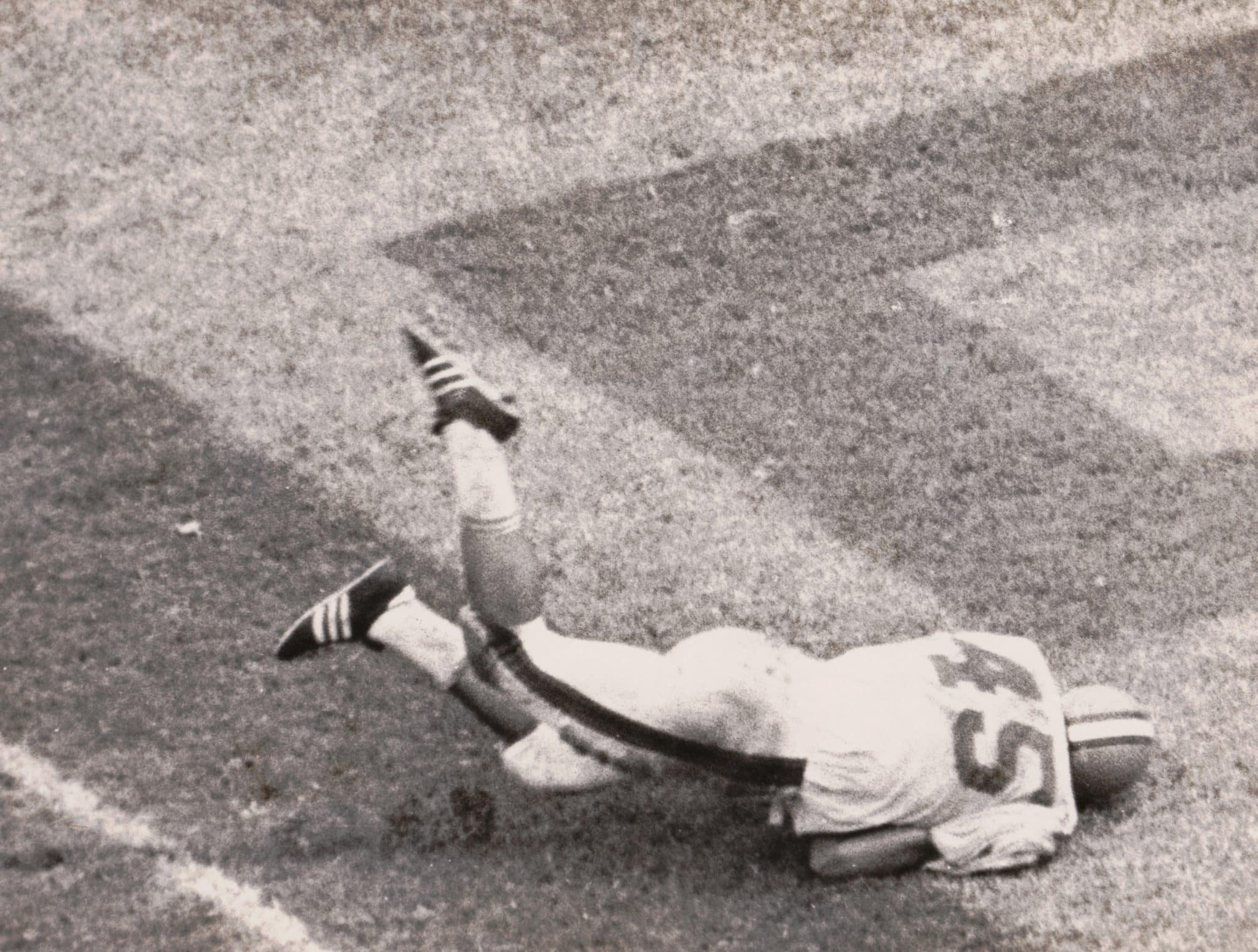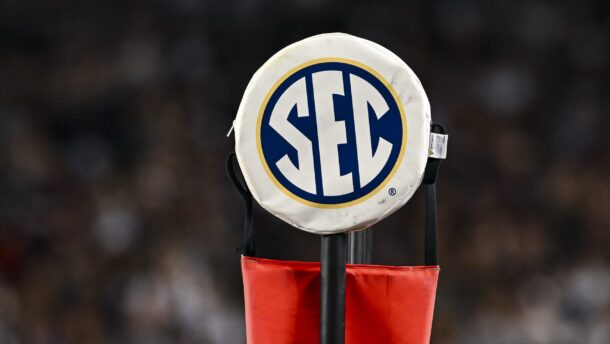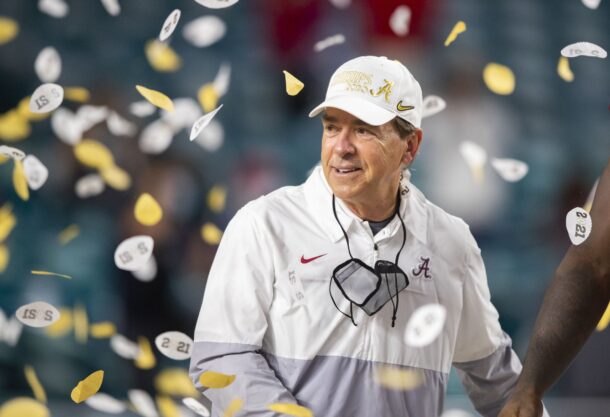
Florida opens its season, along with the Billy Napier era, Saturday night when No. 7 Utah visits The Swamp (7 p.m., ESPN). While the game does mark Florida’s 1st season opener against a Top 10 team since an Orange Bowl loss to eventual national champion Miami in 1987, there have been several memorable season openers in between, including at least 2 that defined the season to come.
Given the stakes, Saturday Down South thought it would take a look at 5 Florida opening day games that defined the season to come, from the great to the good to the bad.
5. 2016: No. 25 Florida 24, UMass 7
Before you laugh, look at the final score and think.
The Gators beating a really bad (2-10) Mark Whipple football team by just 17 points in The Swamp on opening night was, without question, foreshadowing of the season, where the Gators stayed in games with an elite defense but didn’t have the offense to achieve greatness.
How bad was this one offensively for Florida? On a night the Gators honored Steve Spurrier, Florida managed just 10 points before the 4th quarter — hardly the way to honor an offensive genius who led Florida to a national championship. The Gators didn’t really ice the game until Brandon Powell scored on a long touchdown pass from Luke Del Rio to stake the Gators to a 2-possession lead with 8 minutes to go.
Florida would win the SEC East, thanks to an epic goal-line stand in a win at LSU. It would also finish the season in the top 10 nationally in total defense and 6th in defensive success rate. But the Gators scored 30 points just twice, in wins over Missouri and North Texas, and were held to 20 points or fewer on 5 occasions (remarkably winning 2 of those games!).
Florida’s tepid offensive performance against UMass was an early warning sign of the offensive ineptitude to come, and despite a division title, perhaps of the long-term failure of Jim McElwain to build a complete program in Gainesville.
4. 1983: No. 16 Florida 28, No. 20 (and eventual national champion) Miami 3
Charley Pell inherited a program that won 0 games in 1979, and he built it from the ground up into a team that could dominate a great Miami team 28-3 in a season opener in Gainesville. The ‘Canes wouldn’t lose again, of course, finishing 11-1 on their way to Howard Schnellenberger and The U’s 1st national championship. The Gators would finish 9-2-1 in a brutal SEC, losing 1-score games to No. 4 Auburn and No. 4 Georgia in consecutive weeks.
Florida’s dominant win over Miami, however, was one of 4 Gators wins over ranked opponents in 1983, a run that would propel them to their first Top-10 finish in the AP poll (the Gators finished in the top 10 in other polls in the 1960s, but never in the AP).
The star of Florida’s win? EIther quarterback Wayne Peace, who played flawlessly, tossing 2 touchdowns despite a sprained back– or All-American middle linebacker Wilber Marshall, who finished the game with 13 tackles and 5 pressures, harrassing Miami’s Bernie Kosar into throwing 3 backbreaking interceptions.
The game also led to a bumper sticker that has been emulated in other places in the time since:
Florida 28, National Champions 3.
3. 2017: No. 11 Michigan 33, No. 17 Florida 17
Florida scored twice on Wilton Speight interceptions, 1st on a return by Duke Dawson and then by C.J. Henderson, to lead 17-13 at the half. But the Gators never got out of 1st gear offensively, as freshman Feleipe Franks was thrown to the Wolverines against a Don Brown defense that would finish the season ranked in the top 10 nationally. Once Brown and Michigan realized the Gators couldn’t pass, they loaded the box and stuffed the Florida run, limiting the Gators to 11 yards rushing on the afternoon.
The game, which came on the heels of an offseason stolen credit card scandal that cost Florida its best running back and wide receiver for the season, among other players, marked the beginning of the end for the McElwain era.
Out of answers on offense, McElwain nearly broke the confidence of his young, cannon-armed freshman quarterback, and the Gators floundered to an offensive ranking outside the top 100 for the 2nd time in 5 years. A proud defense tried to hold things together, but Florida lost 5 consecutive games in October and November. McElwain and UF parted ways after an embarrassing loss to Georgia that was compounded by McElwain’s decision to manufacture fan-based death threats alleged to have been directed at the players.
It was quite a quick fall from grace for a head coach who won the SEC East in each of his first 2 seasons in Gainesville. But the writing was on the wall after Florida’s loss to Michigan at Jerry’s World to open the season.
2. 1990: Florida 50, Oklahoma State 7
Florida’s favorite son, Heisman Trophy winner Spurrier, coached his 1st game at a sold-out Florida Field in 1990, just before he would dub the building “The Swamp.” Spurrier took the job as a young, brash, up-and-coming head coach who had managed, against all conceivable odds, to win an ACC Championship at Duke. The SEC, still a run-and-defense dominant, 3-yards-and-a-cloud-of-dust league in the 1980s, wasn’t ready for the Spurrier revolution.
Promising to “pitch it around the lot,” Spurrier’s ball plays and “Fun-N-Gun” offense took the league by storm, and a 50-7 win over Oklahoma State was Spurrier’s warning shot across the bow. The Gators gained 500 yards in the victory, paced by a little-known, too-skinny quarterback with short socks named Shane Matthews, who would go on to become an All-SEC quarterback and longtime NFL backup.
Probation, placed on the Gators in the middle of the season due to infractions of Florida’s prior staff, would deny Florida the SEC Championship trophy in 1990. But the Gators would finish 9-2 in Year 1 of the Spurrier era, finishing 1st in the SEC on the field and beginning one of the most dominant decades in the history of SEC football.
1. 1969: Florida 59, No. 7 Houston 34
Unranked and picked to finish near the bottom of the SEC, the Gators were double-digit home underdogs to a terrific Houston team stacked with NFL talent (7 Cougars players were drafted in the 1970 NFL Draft) and beginning the season with their highest ranking in school history. Led by Ray Graves, the Gators knew they had recruited well, but they were relying on young talent everywhere, including 1st-year starting quarterback John Reaves. Graves’ strength at Florida was his pragmatism, and he decided to let the strong-armed Reaves throw more than he had done before in Gainesville, installing a pass-first offense that featured 3 wide receivers in a number of formations.
The new looks, along with a missile of a wide receiver from Miami named Carlos Alvarez, confused and befuddled Houston all afternoon, as the Gators stunned college football before a nationally televised audience by routing the Cougars. The game was just the beginning for the Reaves-to-Alvarez connection, which became one of the most feared in Florida football history. Alvarez would become Florida’s first sophomore All-American at season’s end, and led by Alvarez, dubbed “the Cuban Comet” by the media, the Gators would finish 9-1-1 and defeat SEC regular-season champion Tennessee, 14-13, in the Gator Bowl to close a special campaign. Graves would step down after the season, ending what to that point had been the finest decade of Florida football in program history.
Neil Blackmon covers Florida football and the SEC for SaturdayDownSouth.com. An attorney, he is also a member of the Football and Basketball Writers Associations of America. He also coaches basketball.







